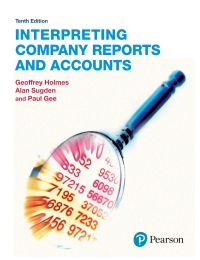solve parts f and g

sede See Buyer 10.14 You have been asked by an investor to value a restaurant. Last year, the restaurant earned pretax operating income of $300,000. Income has grown 4% annually during the last 5 years, and it is expected to continue growing at that rate into the foreseeable future. The annual change in working capital is $20,000, and capital spending for maintenance exceeded depreciation in the prior year by $15,000. Both working capital and the excess of capital spending over depreciation are projected to grow at the same rate as operating income. By introducing modern management methods, you believe the pretax operating-income growth rate can be increased to 6% beyond the second year and sustained at that rate into the foreseeable future. The 10-year Treasury bond rate is 5%, the equity-risk premium is 5.5%, and the marginal federal, state, and local tax rate is 40%. The beta and debt-to-equity ratio for publicly traded firms in the restaurant industry are 2 and 1.5, respectively. The business's target debt-to-equity ratio is one, and its pretax cost of borrowing, based on its recent borrowing activities, is 7"%. The business-specific-risk premium for firms of this size is estimated to be 6%. The liquidity-risk premium is believed to be 15%, relatively low for firms of this type due to the excellent reputation of the restaurant. Since the current chef and the staff are expected to remain when the business is sold, the quality of the restaurant is expected to be maintained. The investor is willing to pay a 10% premium to reflect the value of control. a. What is free cash flow to the firm in year 1? Answer: $150,800 b. What is free cash flow to the firm in year 2? Answer: $156,832 c. What is the firm's cost of equity? Answer: 20.2% d. What is the firm's after-tax cost of debt? Answer: 4.2% e. What is the firm's target debt-to-total capital ratio? Answer: 0.5 f. What is the weighted average cost of capital? Answer: 12.2% g. What is the business worth? Answer: $2,226,448 10.14 a) Year I Pre Tax CF = 300k (1+4% +312K Therease in WC = 20K (1+47.> 20809 Inerease in capitel Spending = 15%(1 +47) > 15600 Year 1 Enterprise CF = 3176(1-40%)-20800-15.00 = 150 800 b.) Year 2 Pre Tax CF = 312k (+47) 324480 nereage m we = 20800(1+47 21632 Increase in Capital Spending = 150ol 1742.)15600 Year 2 Enterpose CF = 32448011-40%)-21652-15600 -136.832 c.) cast of Eguty (CAPM) = 5 6 7) (5.57. d.) After Tax Cost of Debt 1729 7% (1-407) e.) Debt to Eguty Ratio=1.5. Debt to Total capital =.5









